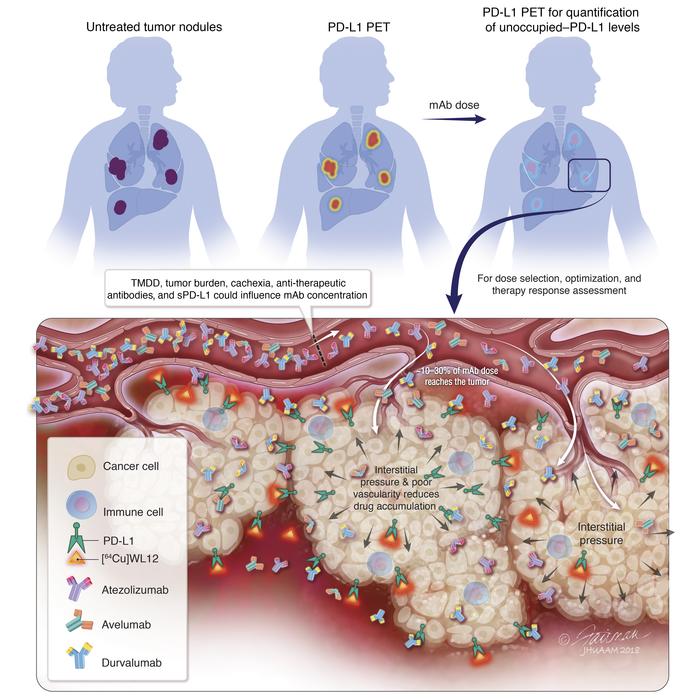Abstract
Immune checkpoint therapies have shown tremendous promise in cancer therapy. However, tools to assess their target engagement, and hence the ability to predict their efficacy, have been lacking. Here, we show that target engagement and tumor-residence kinetics of antibody therapeutics targeting programmed death ligand-1 (PD-L1) can be quantified noninvasively. In computational docking studies, we observed that PD-L1–targeted monoclonal antibodies (atezolizumab, avelumab, and durvalumab) and a high-affinity PD-L1–binding peptide, WL12, have common interaction sites on PD-L1. Using the peptide radiotracer [64Cu]WL12 in vivo, we employed positron emission tomography (PET) imaging and biodistribution studies in multiple xenograft models and demonstrated that variable PD-L1 expression and its saturation by atezolizumab, avelumab, and durvalumab can be quantified independently of biophysical properties and pharmacokinetics of antibodies. Next, we used [64Cu]WL12 to evaluate the impact of time and dose on the unoccupied fraction of tumor PD-L1 during treatment. These quantitative measures enabled, by mathematical modeling, prediction of antibody doses needed to achieve therapeutically effective occupancy (defined as >90%). Thus, we show that peptide-based PET is a promising tool for optimizing dose and therapeutic regimens employing PD-L1 checkpoint antibodies, and can be used for improving therapeutic efficacy.
Authors
Dhiraj Kumar, Ala Lisok, Elyes Dahmane, Matthew McCoy, Sagar Shelake, Samit Chatterjee, Viola Allaj, Polina Sysa-Shah, Bryan Wharram, Wojciech G. Lesniak, Ellen Tully, Edward Gabrielson, Elizabeth M. Jaffee, John T. Poirier, Charles M. Rudin, Jogarao V.S. Gobburu, Martin G. Pomper, Sridhar Nimmagadda
Graphical abstract



Copyright © 2025 American Society for Clinical Investigation
ISSN: 0021-9738 (print), 1558-8238 (online)

